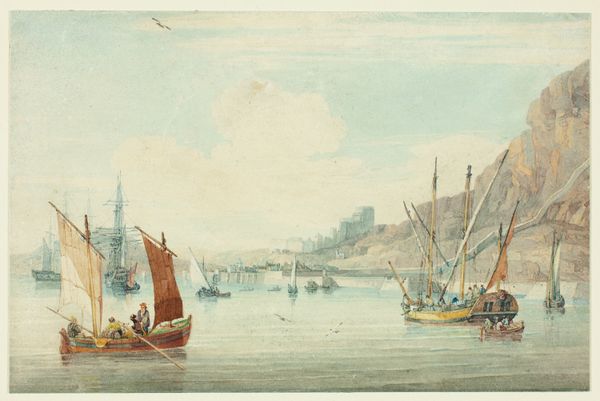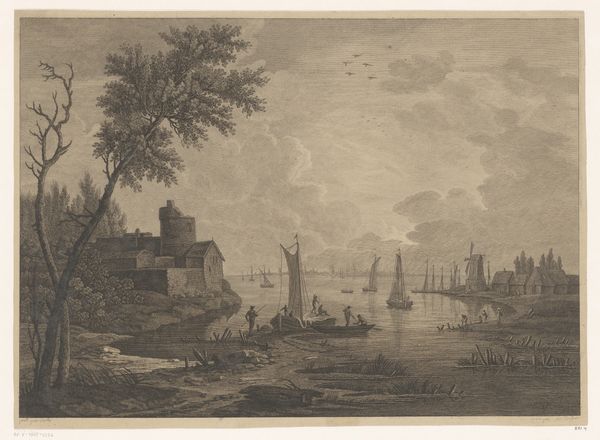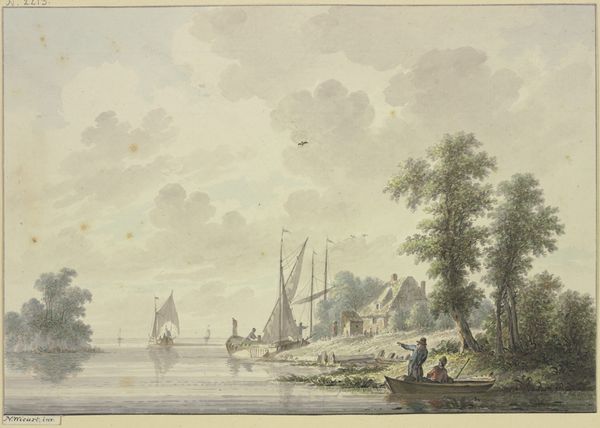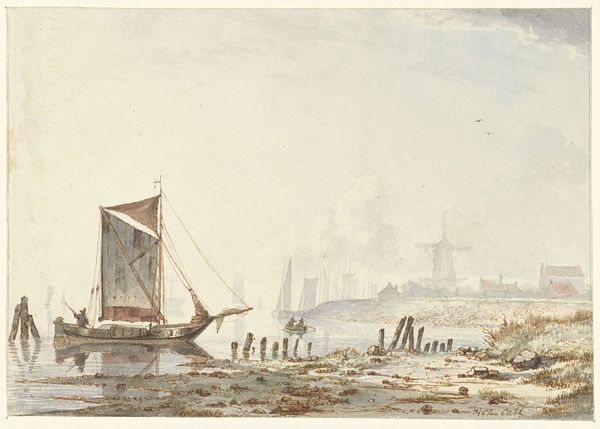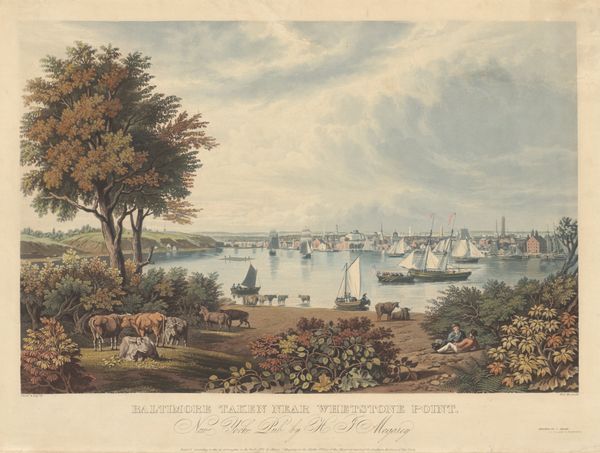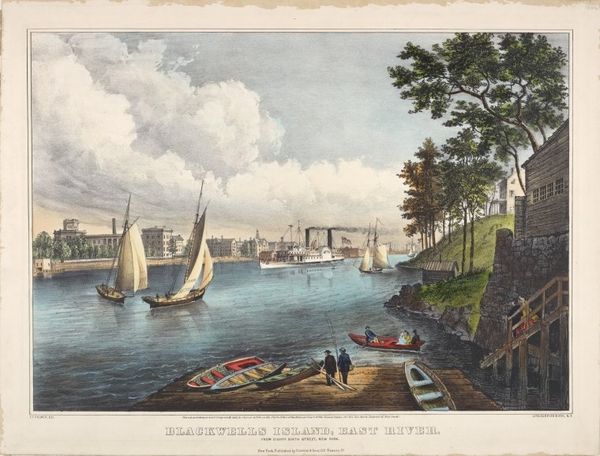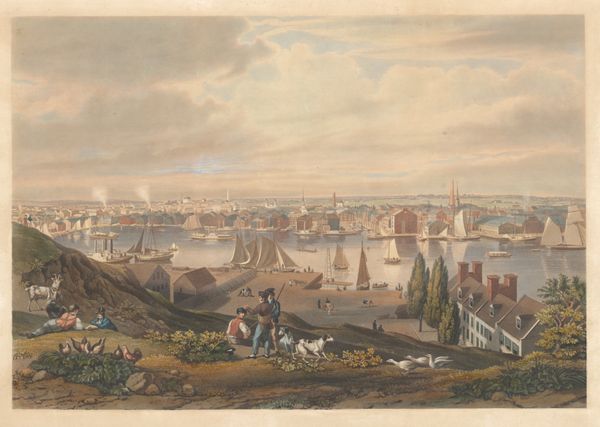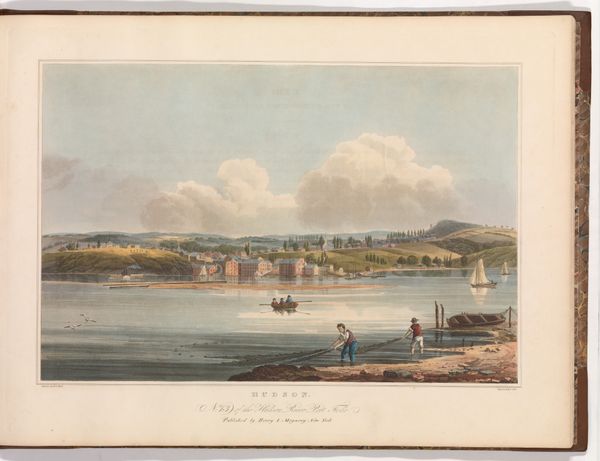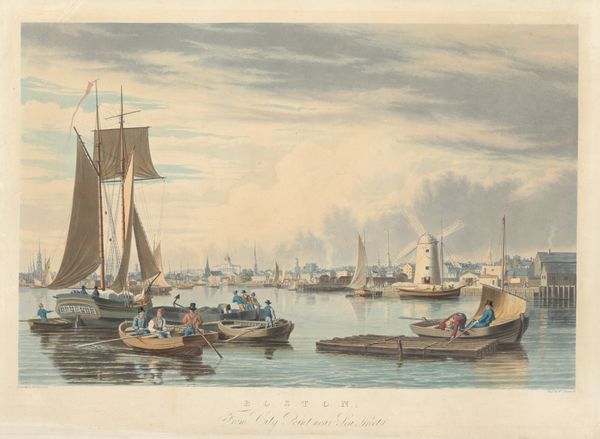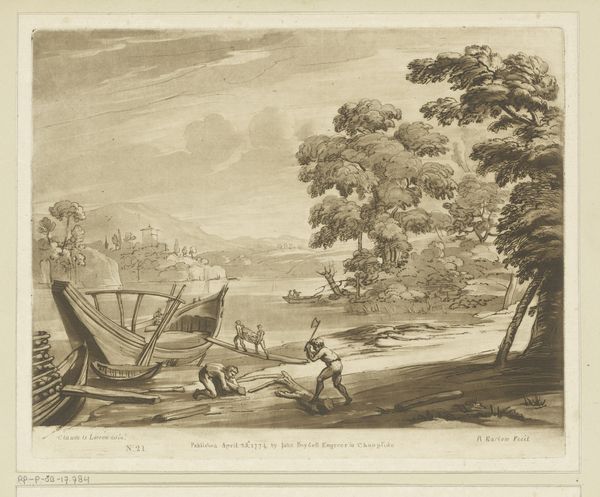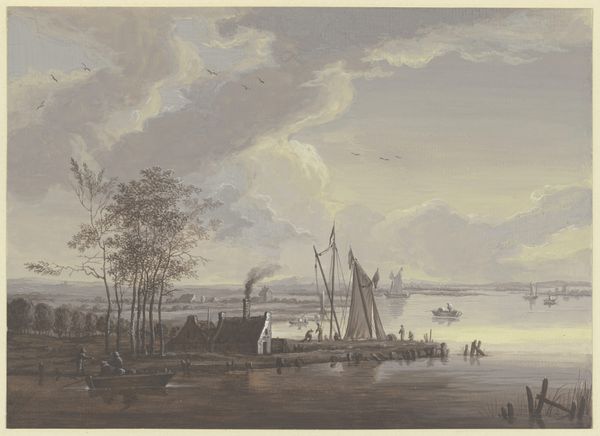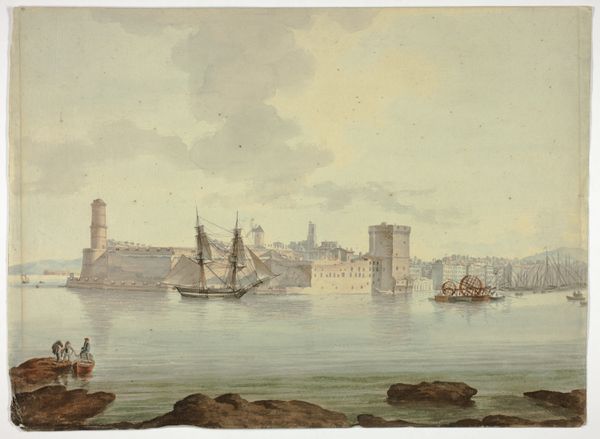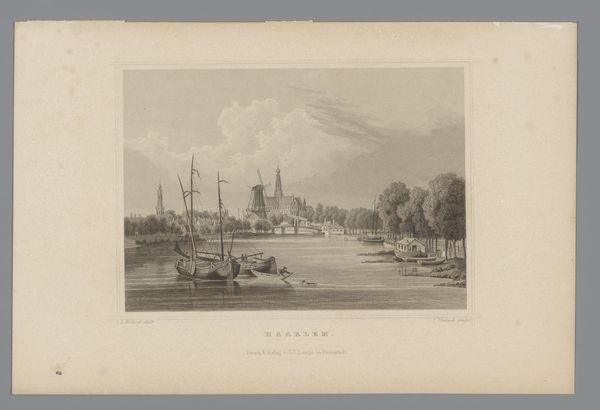
drawing, plein-air, watercolor
#
drawing
#
water colours
#
plein-air
#
landscape
#
watercolor
#
coloured pencil
#
romanticism
#
cityscape
Dimensions: 125 x 179 mm
Copyright: Public Domain
Editor: John Varley’s watercolor, "A View of Chester," created in 1836, feels so serene. The soft washes of color create this dreamy, almost hazy atmosphere. There are so many narratives tucked into the corners, who do you imagine these figures to be, and what is their connection to this scene? Curator: It's interesting, isn’t it, how Varley captures a very particular moment but leaves it open to so many interpretations. He has, ever so gently, led our eyes across this waterscape. When I see it, I feel as if Varley asks: What kind of relationship does he– or rather, do we– have with these old urban settings? I find it so intriguing how he balances that majestic sweep with an almost tender attention to the everyday lives playing out in the foreground. How the figures become just as monumental in presence as the landscape beyond...it's all a grand play, a beautiful harmony if I can put it that way, wouldn't you agree? Editor: Harmony, definitely! It’s not just the placement but also the color palette that does it. All of those muted earth tones are quite calming. But thinking about the city…were industrial landscapes starting to influence artists in this period? Curator: Precisely! And what better way to depict industry’s rise but from the outside, looking in... perhaps that’s why we, along with the artist, become bystanders to the narrative. It’s the age-old dilemma—how does progress change not just our surroundings but our perspective? The question that arises now becomes, does Varley admire the view, or contemplate with trepidation the way society forever alters this setting and subsequently, this "view"? Editor: I never thought of it as a question. So, by choosing to stand outside of the city, Varley shows how an artist and perhaps everyone can contemplate societal change, right? Curator: That is a marvelous point to raise...it’s all a story, really. How an artist and his audience become active bystanders within a particular historical period. How perspective, memory and emotional connection, all blur the lines between ourselves and Varley, Chester and whatever location we choose to call "home". Editor: It is more intricate than I first realized, seeing my surroundings represented in art history. I will certainly look differently at landscape art from now on!
Comments
No comments
Be the first to comment and join the conversation on the ultimate creative platform.
